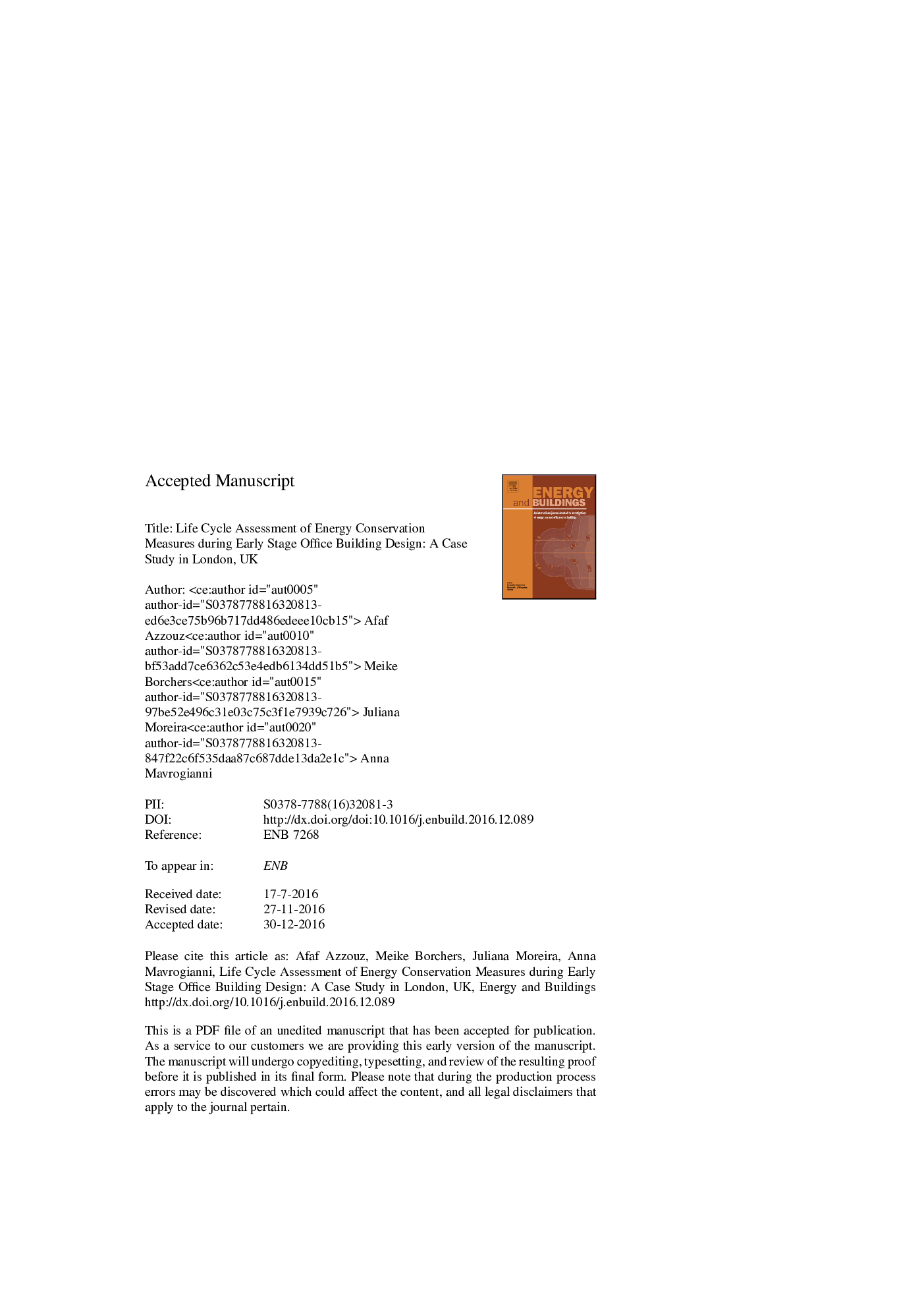| Article ID | Journal | Published Year | Pages | File Type |
|---|---|---|---|---|
| 4919348 | Energy and Buildings | 2017 | 45 Pages |
Abstract
Embodied versus operational environmental indicators are often studied in isolation. This paper presents a cradle-to-grave Life Cycle Analysis of energy conservation measures for a planned large, medium-rise office building in central London, UK with Gross Floor Area of 15,590Â m2 and a 60-year building lifetime. The original design complied with the UK Building Regulations Part L, achieving 40% operational carbon emission savings compared to Target Emissions Rate. The LCA solutions focused on structure, envelope, and operational systems. Embodied energy saving strategies encompassed the application of lean design principles and integration of low carbon materials. Operational energy saving techniques included the adoption of a fabric-first approach, adaptive thermal conditions and sustainable building systems. Cumulatively, these optimization strategies achieved a maximum of 16% and 13% savings on life cycle carbon and energy, respectively, compared to the original design. Embodied strategies saved 32% and 9% on embodied carbon and energy, respectively, while operational strategies reduced the original consumption by 14% on both indicators. Over a 60-year building lifetime, operational energy was 10 times higher than embodied energy, while operational carbon was 8 times higher than embodied carbon. The study findings have highlighted the significance of LCA for early stage building design decisions.
Related Topics
Physical Sciences and Engineering
Energy
Renewable Energy, Sustainability and the Environment
Authors
Afaf Azzouz, Meike Borchers, Juliana Moreira, Anna Mavrogianni,
